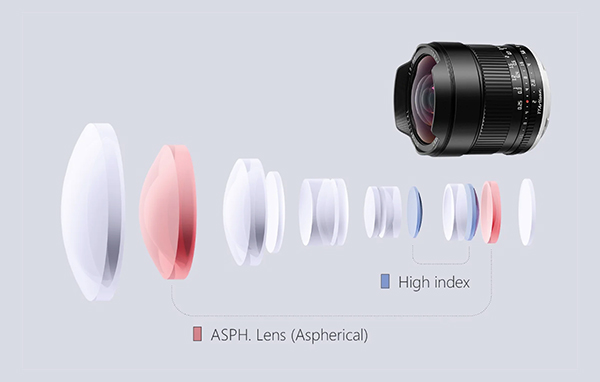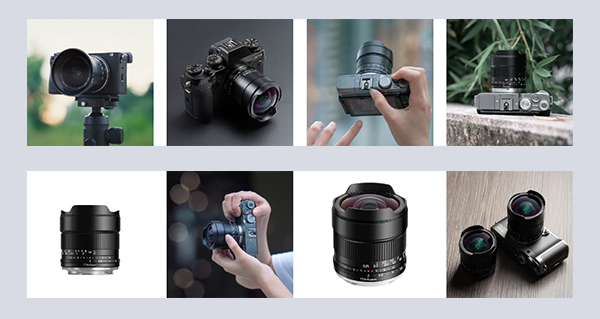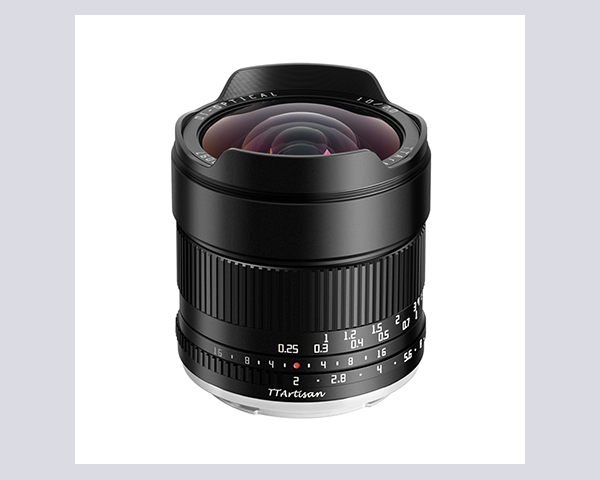REVIEW: TTArtisan Fast, Sharp, Wide 10mm f/2 ASPH for APS-C Sony, Fujifilm, Nikon, Canon and M4/3
High-quality 10mm ultra-wideangle f/2.0 lens for way less than 200 bucks? Are you serious? We took a hard look at TTArtisan’s $159 all-metal 10mm f/2 ASPH manual-manual lens for APS-C format cameras. Here’s what we think.
Overview & First Impressions
The popularity of the TTArtisan brand continues to grow in the US, based on first-rate manual lenses that are affordable and often unique. The 10mm f/2 ASPH is a solid example of why they’re well-liked.

Understand upfront that this is a manual-manual lens; i.e., focus and aperture operations are both manual. Therefore it must be used in Aperture Mode or Manual Mode. Given the outstanding Focus Assist features of modern APS-C cameras, not to the mention the enormous depth-of-field this lens delivers, the manual focus isn’t much of a heartache, although it’s slower, of course, than AF. Remember that not so long ago, all lenses were manual focus, and we still managed to get sharp images. Well, most of the time, anyway.
The ASPH stands for Aspheric, signifying that the optical design incorporates at least one aspherical element, highly prized because of their superior ability to diminish aberrations. If you’re wondering why every lens doesn’t use this component, they’re more difficult to manufacture and therefore cost more. Most lens elements are rotated while ground and polished, a method that produces an unavoidable spherical shape. Aspherical lenses require a different, more costly approach.

The TTArtisan APS-C 10mm f/2 ASPH contains not one but two aspherical elements. This does not automatically make it better. The proof of the pudding is in the eating, as it’s been said. Everything depends on the quality and location(s) of the element(s) as well as the other components. The 10mm f/2 construction also includes two unspecified High Index elements.
Shutterbug took a look at the TTArtisan APS-C 50mm f/1.2 recently and we gave it high marks. You can read our Choosing Wisely condensed review here.

Features & Specifications
For APS-C format sensor cameras
Fast f/2.0 aperture comprises 13 elements in 10 groups
Contains 2 aspherical + 2 High Index elements
105° ultra-wide field-of-view
Focuses a bit closer than 10 inches
Fully metal barrel and lens mount
8-blade diaphragm turns point light sources into starbursts
Weighs about 12 ounces (≈340g)
Comes with a filter holder (72mm) and screw-in cap
Fits popular APS-C cameras
Price from manufacturer is $159 including shipping

Exterior Construction: Fit & Finish
Out of the box, in the hand, the TTArtisan APS-C 10mm f/2 ASPH feels hefty and sturdy. It appears to be all metal construction and is truly a good-looking piece of glass. The lens mount is metal (appears to be stainless steel) and the overall finish is excellent. The glass has mesmerizingly gorgeous layers of coating.
The focus ring is quite smooth and nicely knurled for easy, slip-free operation. The aperture ring is marked in stops and half-stops, all with clean detents. That said, the aperture ring is very narrow, and that could be problematic for those with ham-like hands. Additionally, unlike on the 50mm f/1.2 mentioned above, the aperture ring is smackdab above the lens mount, so it’s in a tight space to begin with. On the 50mm f/1.2 the aperture ring is close to the front element and easily accessible.
It ships with a metal screw-in combination lens hood / filter adapter (72mm) and a metal screw-in lens cap. There’s a shallow, petal-shaped lens hood (of sorts) built in. I recommend using the included accessory hood for efficacy and protection. I hate screw-in lens caps, but that’s just me. The built-in shade doesn’t shade much of anything; it looks cool, though.

Performance Summary
In a word, image quality from the TTArtisan APS-C 10mm f/2 ASPH is amazing, considering the price and the aggressive feature set it promises. I evaluated this ultra-wideangle in Fujifilm-X mount, so the equivalent focal length (in the old 35mm film world) is 15mm, still ultra-wide in my mind.
Colors were rendered clean and richly saturated with zero tint bias. Whites were clean and free of edge bleed. I found minimal distortion and an acceptably low level of vignetting. This lens performs quite well shooting closeups, too, and that pleasantly surprised me.
Overall, this is very fine lens. Priced at $159, it’s a steal. In fact, even if priced at $299 it would still be a bargain.

Conclusion
If you shoot any of the popular, modern APS-C camera brands and want to stretch a landscape, building interior or some such, give this lens a close look. It doesn’t cost much but don’t let the low price mislead you—the image quality is very high.
The only drawback is that it’s 100% manual aperture and 100% manual focus. Then again, precise focusing with a 15mm (equivalent) lens is of minor importance because of the extreme depth of field. And if you shoot Aperture Priority primarily, as many of us do, the manual aperture issue is not an issue at all.
And don’t forget, this is a very fast f/2.0 lens. It’s right at home in dimly lit restaurants, candlelit birthday parties and virtually any indoor situation.

Availability & Price
The TTArtisan 10mm f/2 ASPH is available now in the following APS-C mounts: Sony E, Fujifilm X, Nikon Z, Canon RF plus Micro 4/3rds. Price is $159 when you order directly from TTArtisan. Price includes shipping to the US. Check website for occasional additional discounts. Also available from Amazon. Visit the TTArtisan Store at amazon.com for a close look at their lineup of lenses, light meters, accessory viewfinders and lens adapters.
A Bit About TTArtisan
TTArtisan specializes in the development, manufacturing and sales of mirrorless camera lenses. They are a member of the Micro Four Thirds System Standard Group. The owner is Shenzhen Mingjiang Optical Technology Co., Ltd. TTArtisan was established in 2019, so they’re a young company, but they’ve already established themselves as a reliable, innovative, high-quality brand.
Become a Member of the Shutterbug Community
Register for a free account. Sign up for our newsletter. Spend five minutes (or less) uploading your best shots once every week or so. Potentially become a Shutterbug Photo of the Day winner. Enjoy viewing the fantastic work being done by thousands of photographers all over the world—and add your images to the enduring collection.
—Jon Sienkiewicz
(As an Amazon Associate, Shutterbug earns from qualifying purchases linked in this story.)







